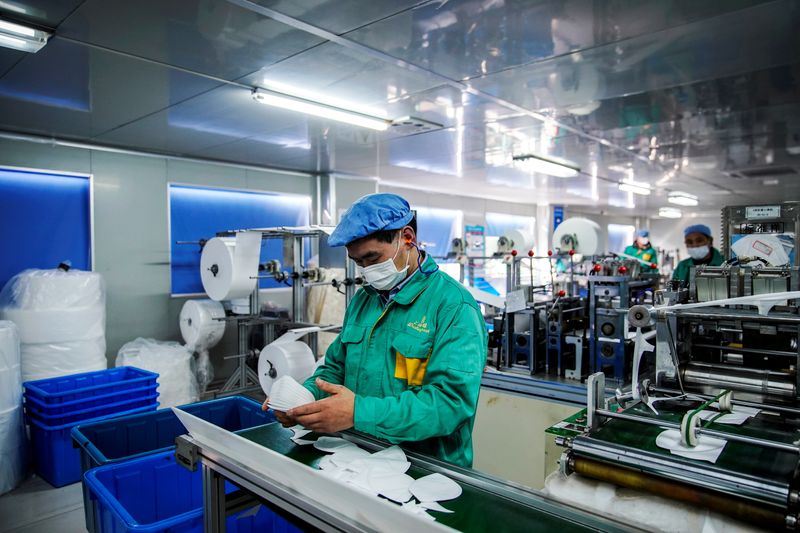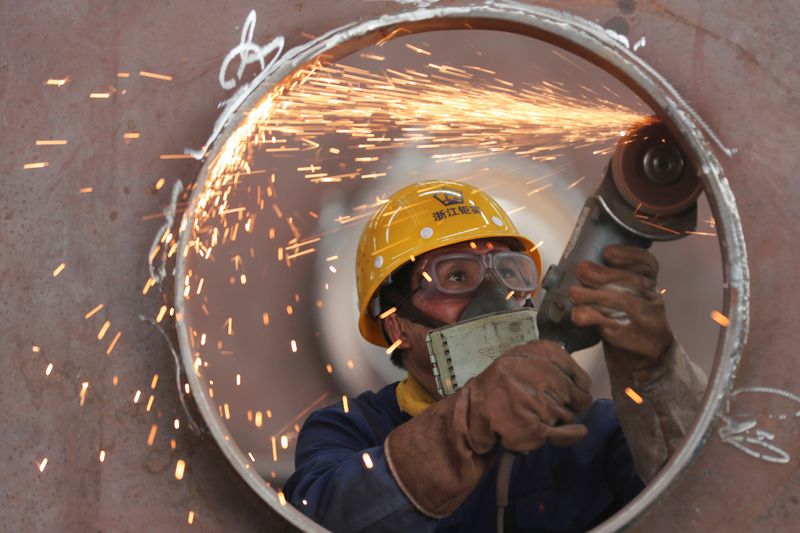By Gabriel Crossley
BEIJING (Reuters) - China's factory activity extended solid growth in September, twin surveys showed, as the nation's crucial exports engine revved up on improving overseas demand and underlined a steady economic recovery from the coronavirus shock.
The official manufacturing Purchasing Manager's Index (PMI) rose to 51.5 in September from 51.0 in August, according to data from the National Bureau of Statistics (NBS) on Wednesday, remaining above the 50-point mark that separates growth from contraction for the seventh month.
Analysts had expected it to pick up slightly to 51.2.
A private survey, also released on the day, painted a similar picture of the manufacturing sector gaining momentum backed by stronger overseas demand.
China's vast industrial sector is steadily returning to the levels seen before the pandemic paralysed huge swathes of the economy, as pent-up demand, stimulus-driven infrastructure expansion and surprisingly resilient exports propel a recovery.
The official PMI, which largely focuses on big and state-owned firms, also showed the sub-index for new export orders stood at 50.8 in September, improving from 49.1 a month earlier and snapping eight months of declines.
The signs of stronger overseas demand were also highlighted in the Caixin/Markit Manufacturing Purchasing Managers' Index(PMI), which focuses more on small and export-oriented firms. Its gauge for new export orders rose at the fastest pace in over three years.
Recently, economic indicators ranging from trade to producer prices have all suggested a further pick up in the industrial sector. Profits at China's industrial firms extended robust growth in August to the fourth month, official data showed on Sunday.
Domestic demand also shows signs of broadening, with industrial output accelerating the most in eight months in August and retail sales growing for the first time this year.
Adding to the demand recovery from the coronavirus-induced slump, the official PMI showed activity in China's services sector expanded at a faster pace in September.
" (W)e are entering a period of above trend growth, which should help absorb the remaining slack in the labour market and allow for some policy tightening next year," said Julian Evans-Pritchard, senior China economist at Capital Economics, in a note to clients.
CHALLENGES AHEAD
Yet, even as China emerges from the pandemic in fairly stable shape, many expect the road ahead to be bumpy.
China's economy, which grew 3.2% in the second quarter year-on-year, is set to expand 2.2% this year - the weakest in over three decades.
A sub-index for employment in the official PMI improved slightly but remained in contractionary territory. It stood at 49.6 in September from 49.4 the month before, indicating the pressure on jobs and keeping policymakers primed for more support measures.
Moreover, a growing rift between China and the United States over trade, technology and a range of other issues have analysts warning about risks to the outlook. Tensions between the two countries are expected to escalate further ahead of the U.S. Presidential election in November, which some China observers say could undercut the recovery.
"Although overall manufacturing demand has improved, the industry has recovered unevenly," said Zhao Qinghe, an official at the NBS, in comments accompanying the data, noting weaknesses in demand for clothing and wood processing manufacturing in particular.

"In addition, the global epidemic has not yet been fully and effectively controlled, and there are still uncertain factors in China's imports and exports."
